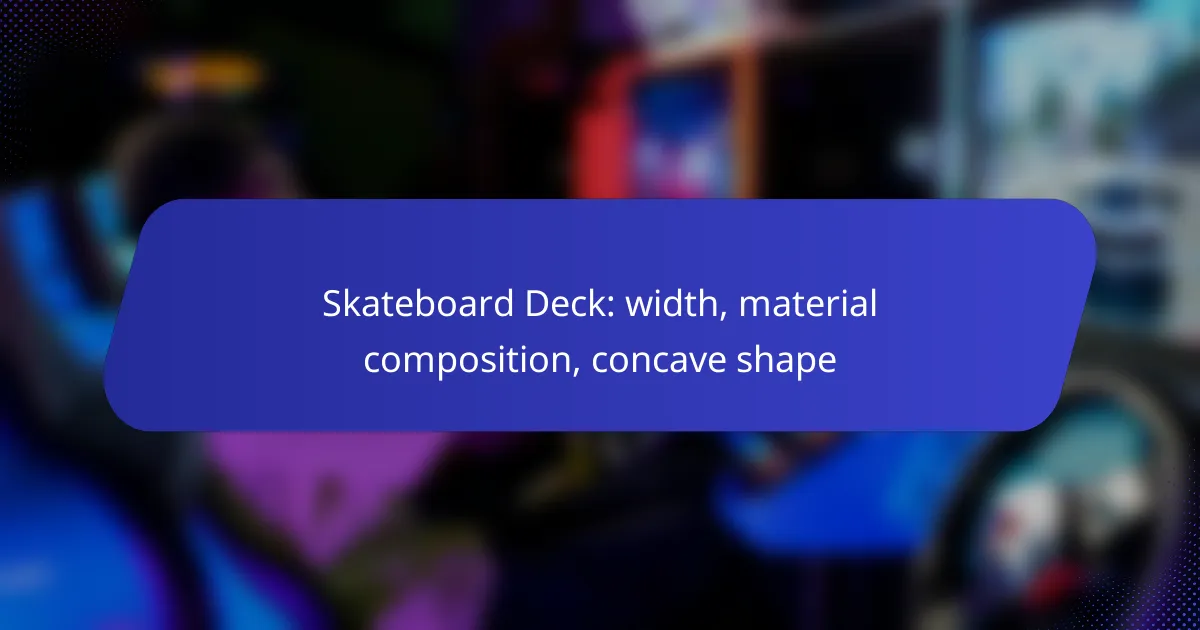Understanding snowboard specifications such as flex rating, shape type, and length is essential for optimizing your riding experience. The flex rating indicates the board’s stiffness, affecting its responsiveness and stability, while the shape type influences how the board interacts with snow and performs across different terrains. Additionally, selecting the right length based on your height, weight, and riding style ensures better control and comfort on the slopes.

What is the flex rating of a snowboard?
The flex rating of a snowboard measures its stiffness and flexibility, impacting how it performs under different conditions. Ratings typically range from soft to stiff, influencing the board’s responsiveness and stability during rides.
Flex rating scale explained
Flex ratings usually range from 1 to 10, with 1 being very soft and 10 being extremely stiff. A softer board (1-3) bends easily, making it more forgiving and easier to maneuver, while a stiffer board (7-10) provides better stability at high speeds and during aggressive turns.
Manufacturers may use different scales, so it’s essential to check the specific flex rating system for each brand. Some boards also feature varying flex patterns, such as directional or twin-tip designs, which can affect performance beyond the basic rating.
Importance of flex rating for performance
The flex rating significantly influences a snowboard’s handling and performance. Softer boards are ideal for beginners or those who enjoy freestyle riding, as they allow for easier turns and tricks. Conversely, stiffer boards are better suited for advanced riders who prioritize speed and stability on steep terrain.
Understanding flex ratings helps riders choose a board that matches their skill level and riding style. Selecting the right flex can enhance comfort and control, reducing the risk of falls and improving overall enjoyment on the slopes.
Recommended flex ratings for different riding styles
For beginners, a flex rating between 1 and 4 is recommended, as it provides the necessary forgiveness for learning. Intermediate riders may benefit from a flex rating of 4 to 6, offering a balance between playfulness and stability.
Advanced riders who focus on all-mountain or freeride styles should consider boards with a flex rating of 7 or higher for optimal performance. Freestyle riders often prefer a softer flex for better maneuverability, typically in the 3 to 5 range, allowing for easier tricks and jumps.

How does snowboard shape type affect performance?
Snowboard shape type significantly influences performance by determining how the board interacts with the snow and handles various conditions. Different shapes cater to specific riding styles and terrains, affecting aspects like stability, maneuverability, and edge control.
Common snowboard shape types
There are several common snowboard shape types, including directional, twin, and directional twin. Directional boards are designed for riding primarily in one direction, making them ideal for powder and backcountry. Twin boards are symmetrical, offering equal performance in both directions, which is perfect for freestyle riding. Directional twin boards combine features of both, providing versatility for various conditions.
Impact of shape type on maneuverability
The shape type of a snowboard directly affects its maneuverability. Directional boards tend to be more stable at high speeds but may feel less agile in tight turns. In contrast, twin boards excel in quick maneuvers and tricks, allowing for easier spins and jumps. Riders should consider their preferred style and the type of terrain they frequent when choosing a shape for optimal performance.
Best shape types for various terrains
For powder and off-piste riding, directional boards are often the best choice due to their design that enhances floatation and stability. On groomed runs, twin boards can provide a playful experience, allowing for quick turns and tricks. For mixed conditions, directional twin boards offer a balanced approach, making them suitable for riders who enjoy both freestyle and all-mountain experiences.

What snowboard length should I choose?
The ideal snowboard length depends on your height, weight, and riding style. Generally, a board should reach somewhere between your chin and nose when stood on its end, but personal preference and specific conditions can influence this choice.
Length recommendations based on rider height
For riders under 5 feet tall, a snowboard length of around 130-140 cm is typically recommended. Those between 5 and 6 feet should consider boards ranging from 150 to 160 cm, while riders over 6 feet may opt for boards from 160 cm and above. These ranges provide a good starting point, but individual weight and skill level should also be factored in.
It’s crucial to remember that taller riders may prefer longer boards for stability, while shorter riders might choose shorter boards for easier maneuverability. Always consider your comfort and control when selecting a length.
How riding style influences snowboard length
Your riding style significantly impacts the snowboard length you should choose. Freestyle riders often prefer shorter boards (around 140-150 cm) for better tricks and spins, while freeride and all-mountain riders typically select longer boards (150-170 cm) for improved stability and float in powder.
Additionally, if you plan to ride mostly on groomed runs, a slightly shorter board can enhance agility. Conversely, if you frequently ride in backcountry or deep snow, a longer board will provide better performance and control.
Length adjustments for different snow conditions
Snow conditions can necessitate adjustments in snowboard length. In powder, longer boards are advantageous as they offer better floatation, while shorter boards excel on hardpack or icy surfaces due to their maneuverability.
As a rule of thumb, consider adding 5-10 cm to your board length for deep snow conditions. Conversely, if you primarily ride in park or on groomed trails, reducing the length slightly can enhance your ability to perform tricks and turns.

What factors should I consider when selecting a snowboard?
When selecting a snowboard, consider factors such as flex rating, shape type, and length. These elements significantly influence your riding style, performance, and comfort on the slopes.
Key attributes to evaluate
Flex rating indicates how stiff or soft a snowboard is, affecting maneuverability and stability. Softer boards are generally more forgiving and easier to turn, making them ideal for beginners or park riders, while stiffer boards provide better control at high speeds, suitable for advanced riders.
Shape type refers to the board’s design, which can be directional, twin, or directional twin. Directional boards are optimized for riding in one direction, while twin boards offer symmetrical performance, making them versatile for tricks and switch riding. Choose based on your preferred riding style.
Length is crucial as it affects balance and control. A general rule is to select a board that reaches between your chin and nose when stood upright. Heavier riders may prefer longer boards for stability, while lighter riders might opt for shorter boards for easier handling.
Importance of brand reputation in selection
Brand reputation plays a vital role in snowboard selection as established brands often have a history of quality and performance. Well-known brands typically invest in research and development, ensuring their products meet industry standards and rider expectations.
Choosing a reputable brand can also provide better customer support and warranty options, which are essential for addressing any issues that may arise. Look for brands with positive reviews and endorsements from experienced riders to ensure you make a wise investment.
Additionally, consider the brand’s commitment to sustainability and ethical manufacturing practices, as these factors are increasingly important to many consumers today.

How do flex rating, shape type, and length interact?
The flex rating, shape type, and length of a snowboard work together to influence performance, comfort, and control. Understanding how these attributes interact helps riders choose the right board for their style and conditions.
Understanding the relationship between attributes
The flex rating indicates how much a snowboard bends under pressure. Softer boards (flex rating 1-4) are more forgiving and easier to maneuver, making them ideal for beginners or park riders. Stiffer boards (flex rating 7-10) provide better stability at high speeds and are preferred by advanced riders for aggressive carving.
Shape type, which includes directional, twin, and directional twin, affects how the board performs in different terrains. Directional boards are designed for riding primarily in one direction, offering better performance in powder, while twin boards are symmetrical, allowing for versatile riding in both directions. The length of the board also plays a crucial role; shorter boards are easier to turn and control, while longer boards provide better stability and speed.
Choosing a balanced snowboard setup
To achieve a balanced snowboard setup, consider your riding style, skill level, and the conditions you typically encounter. For beginners, a softer, shorter twin board is often a good choice for easy maneuverability. Intermediate to advanced riders may prefer a stiffer, directional board for better performance in varied conditions.
Always match the board’s flex rating with your weight and riding style. A common guideline is to select a board length that reaches between your chin and nose when standing upright. This ensures a good balance between control and stability, allowing you to maximize your riding experience.

What are emerging trends in snowboard technology?
Emerging trends in snowboard technology focus on enhancing performance, comfort, and customization. Innovations in flex rating systems, advancements in snowboard shapes, and the future of length customization are key areas driving the evolution of snowboarding gear.
Innovations in flex rating systems
Flex rating systems are becoming more sophisticated, allowing riders to choose boards that match their specific riding style and conditions. Manufacturers are now using numerical scales and color-coded systems to indicate flex, making it easier for consumers to understand how a board will perform.
For example, a board with a flex rating of 1-3 is typically softer and more forgiving, ideal for beginners, while a rating of 7-10 offers stiffer boards suited for advanced riders seeking precision and control. Riders should consider their skill level and preferred terrain when selecting a flex rating.
Advancements in snowboard shapes
Snowboard shapes are evolving to enhance versatility and performance across various snow conditions. New designs, such as directional and twin shapes, cater to different riding styles, with directional boards being optimal for freeriding and twin boards excelling in park settings.
Additionally, features like rocker and camber profiles are being refined to improve edge control and floatation. Riders should assess their typical riding environment and choose a shape that complements their style and the type of snow they encounter most often.
Future of snowboard length customization
Customization in snowboard length is gaining traction, allowing riders to select boards that fit their height, weight, and riding preferences more accurately. Some brands are offering adjustable length options or modular designs that let users swap out sections of the board.
Choosing the right length is crucial for performance; shorter boards are generally more maneuverable, while longer boards provide stability at high speeds. Riders should consider their skill level and the type of riding they plan to do when determining the ideal board length.

